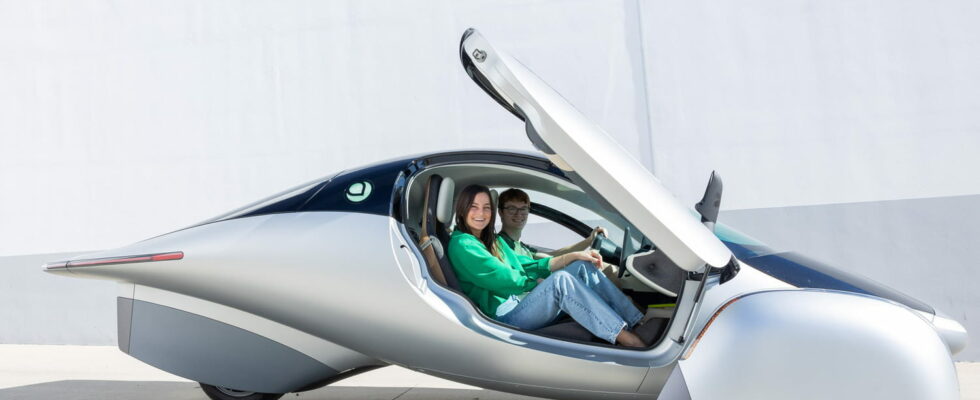This electric car is not only distinguished by its futuristic design: it works with solar energy captured by its photovoltaic panels which allow it to drive several dozen kilometers per day.
As electric cars become more and more popular, a new innovation could revolutionize this market. Aptera, a start-up specializing in eco-friendly vehicles, has unveiled a model capable of traveling up to 60 kilometers per day using only solar energy. This impressive performance offers a new look at the future of sustainable mobility and could solve some of the range problems of electric vehicles.
Called Aptera Launch Edition, this solar vehicle was presented at CES 2025, the major new technology show held at the beginning of January in Las Vegas. Thanks to four solar panels installed on its hood, roof and tailgate, the car is able to recharge its batteries during the day. These solar cells allow it to travel a daily distance equivalent to that many drivers travel to and from work, without needing to plug the car into a power outlet.
In addition to its solar autonomy, the Aptera Launch Edition can also be recharged via an electrical outlet, with a total range of 640 kilometers. This makes it one of the most capable electric cars on the market, rivaling models from prestigious brands such as Tesla and Mercedes-Benz. In addition, its energy efficiency is remarkable. While a Tesla Model S uses an average of 194 watt hours per mile, the Aptera only uses 100, making it about 50% more efficient than its competitors.
One of the secrets of this efficiency lies in its unique design. The car was designed to minimize air resistance, thanks to its ultra-aerodynamic shape and the use of lightweight materials such as carbon fiber. With only six key components in its chassis, the car is much simpler and lighter than traditional electric vehicles, contributing to its incredible energy performance. This simplicity of design also allows for faster and cheaper production, which could make the car more accessible in the future.
This vehicle is not only a technological feat, it could also meet the needs of environmentally conscious drivers. By integrating solar technologies directly into the bodywork, Aptera allows users to reduce their dependence on fossil energy sources, while reducing their carbon footprint. Although the Aptera Launch Edition is not yet commercially available, it represents a significant step forward towards a transition to transportation powered entirely by renewable energy.
While the future of solar vehicles looks promising, Aptera has already signed a partnership with LG for the supply of batteries until 2031, which suggests a ramp-up in production in the years to come. If this model succeeds in establishing itself, it could well transform the way we think about mobility and energy.
